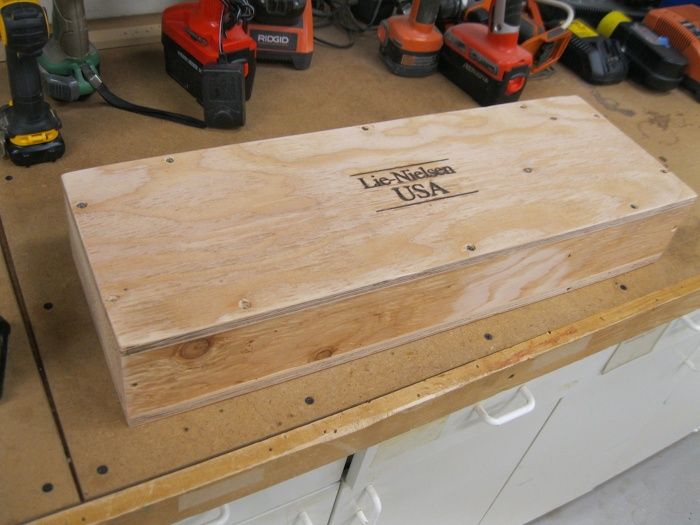
For the face, I'm planning to install Lie-Nielsen's 18-inch chain drive vise. I'm undecided whether I will install a tail vise. I ordered the face vise ahead of time so I could tweak the plans if necessary.
I love workbenches with large, thick tops. So when I came across a great deal on a couple of oversized hemlock timbers a few weeks back, I figured the opportunity was right to go ahead and upgrade my bench with a sturdier, more traditional version.
Workbenches are always a popular conversation topic around the FWW office, and even more so over the last few months as we’ve been reviewing some new vise hardware and putting together a special issue on workbenches. Perhaps it’s got to me, because I’ve been bitten by the bench-building bug.
The influence for the bench I’m planning is based largely on John Tetreault’s hybrid-Roubo, albeit with a few design tweaks. First I plan to shrink it to 7 ft. long or less, so it will better fit in my garage. With the shorter length, I’ll probably go ahead and eliminate the knee braces, too. In terms of hardware, I’m planning to install just one vise—an 18 in., chain-driven model—on the face. And since I’m worried that the lack of a tail vise will bother me down the road, I’m planning to leave enough room on the tail end to retrofit a wagon vise if I change my mind. I’m also toying with the idea of installing a leg vise on the opposite face, so I’ll at least leave enough room to do that. (Anyone ever tried that? Let me know in the comments below.)
And then, of course, there’s the top. I’m planning to the two, 4 in.-thick hemlock timbers side-by-side, which offers two different design options I’m considering. One option is to glue them together and have a single-piece, solid top. The other option is to make a split-top. It’s trickier to design and build, but it would allow for a tool tray, a planing stop and extra clamping space and it would make the bench lighter and therefore easier to move in pieces. I just worry that it may be overkill for me.
Before I got started tweaking the design, I wanted to see exactly what I was working with, so I rough-milled the 15 1/2 in. wide slabs. I knew that the top would finish at 24 in wide, so I jointed one edge, and then at the bandsaw ripped the slabs down to 13 1/2 in. wide. Then I jointed both faces (thank goodness for our 16 in. jointer), jointed the bandsawn edge square to one face, and ripped the opposite edge so the piece was just over 12 1/2 in. wide. Then, at the chopsaw, I cut the ends, leaving the boards down to 7 ft., 5/8 in. long. Those dimensions eft me with at least 1/4 in. of material from the edges and ends of both slabs to cut away during final milling.
Normally, I wouldn’t have milled the top first. I decided to do so in this case, however, because I was worried about moisture. When I checked the slabs with a moisture meter, some spots were close to 23 percent. I wanted to see how wet it was, and the milling would allow me to get a sense of what was going on inside of the lumber.
It was wet to the touch in a few spots, and the end grain had a few visibly damp areas. Not so good. My plan is to let the slabs dry in the FWW shop—which is extremely dry—while I work on the base. To help prevent checking as it air dries, I slapped a coat of Anchor Seal on the ends and on some of the surface knots, too.
I’m not too worried about the moisture content, however. For the most part, the boards at 14 to 17 percent or well below, and the timbers for the base are under 10 percent. I think the top will be OK. Plus, as the wood dries, I’m hoping the mortises in the bottom of the slab top will tighten on the tenons from the base, and make a good fit even better. That being said, I’ll definitely need to keep an eye on the drying process as the bench comes together.

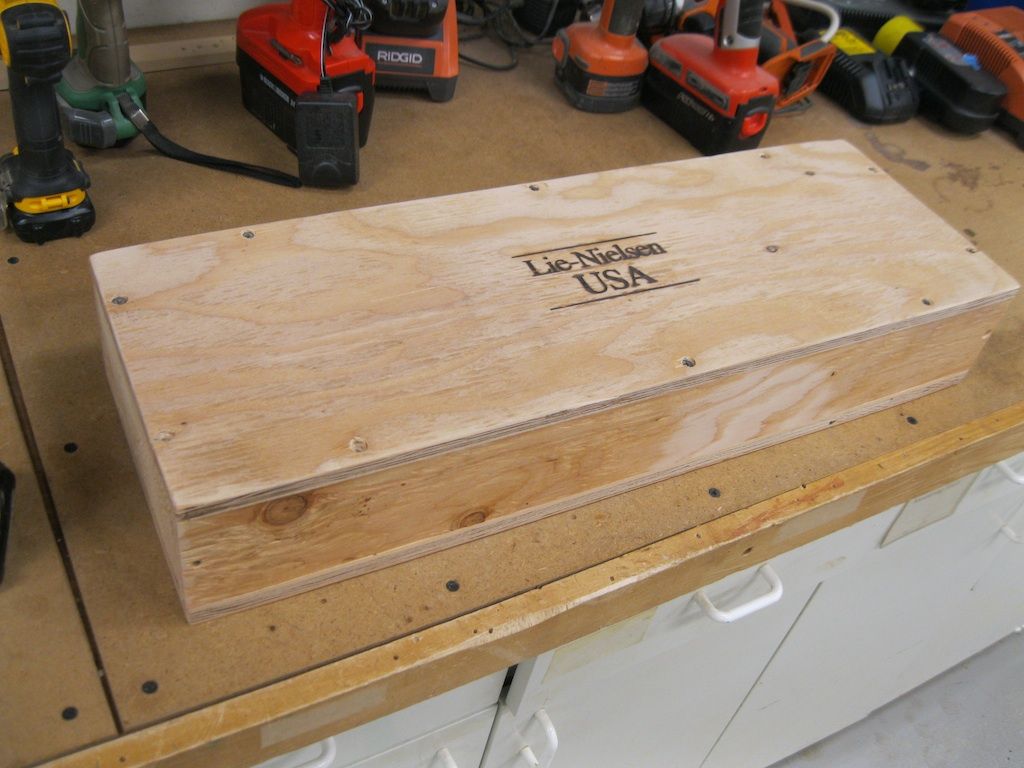
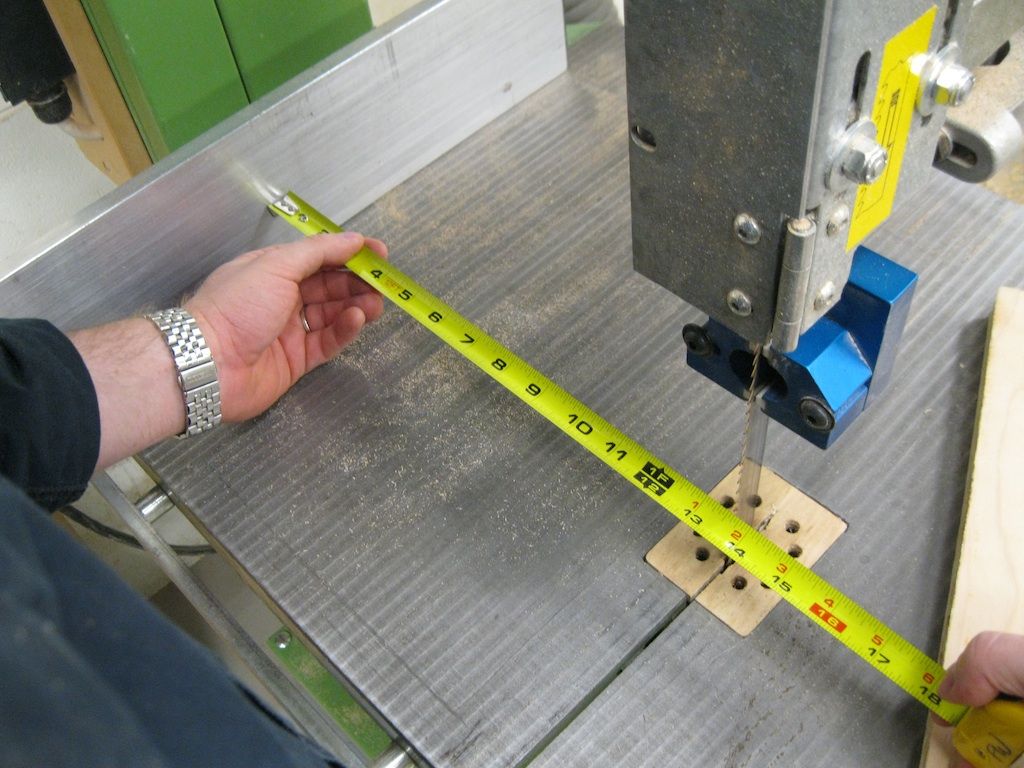
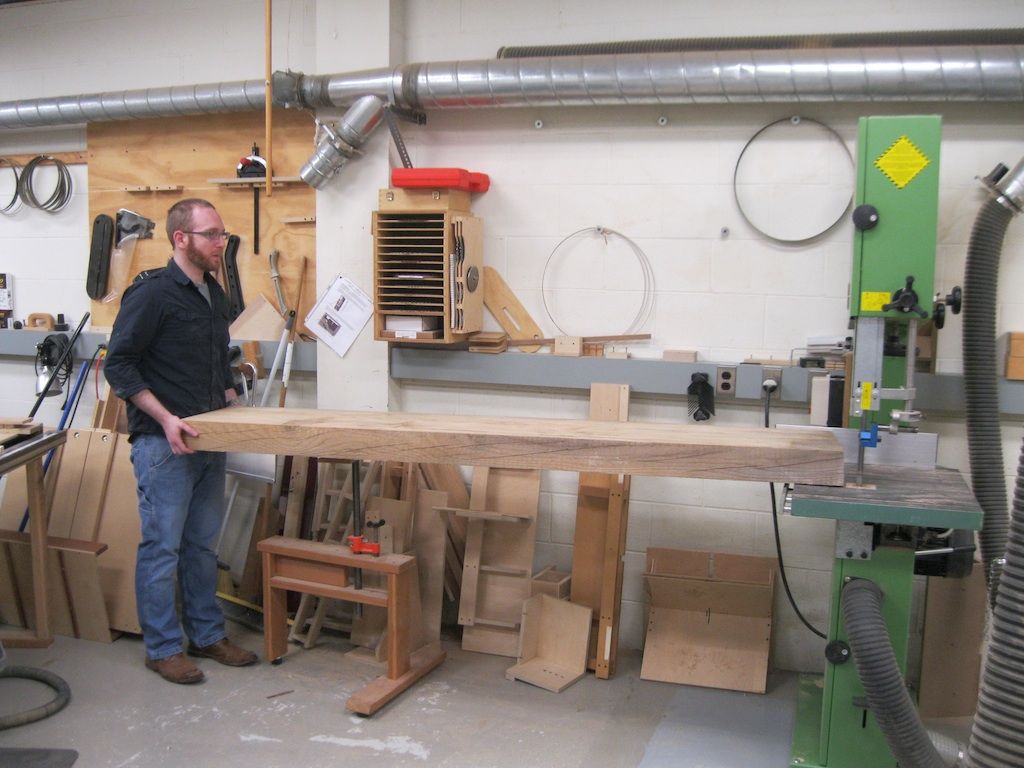


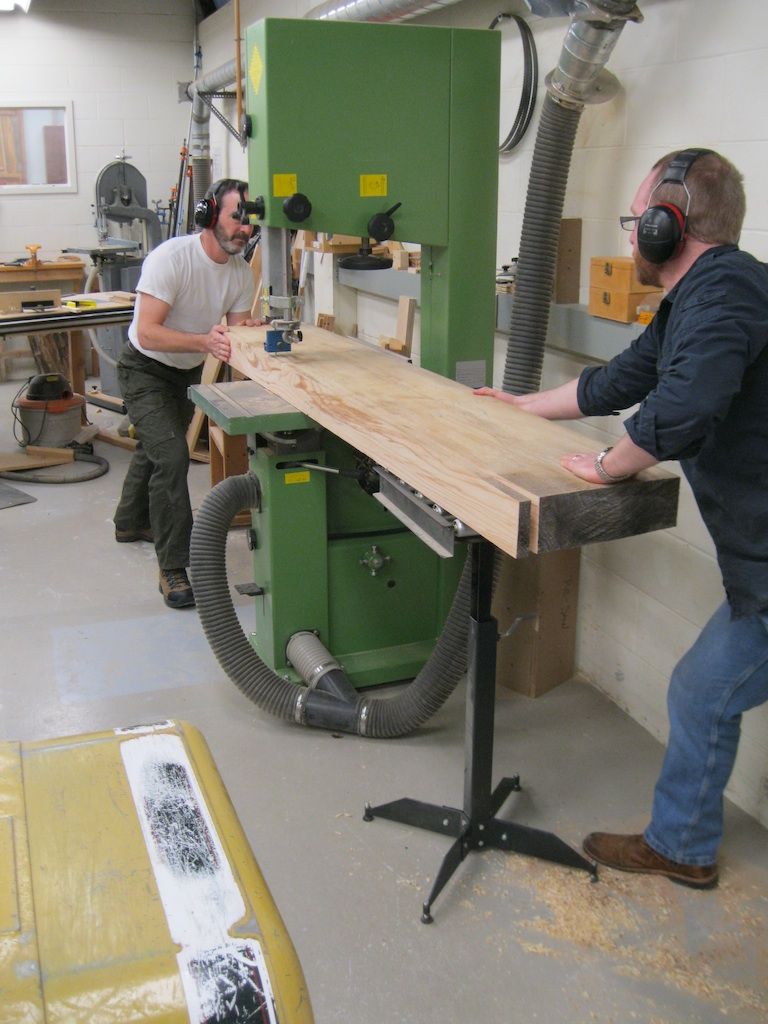
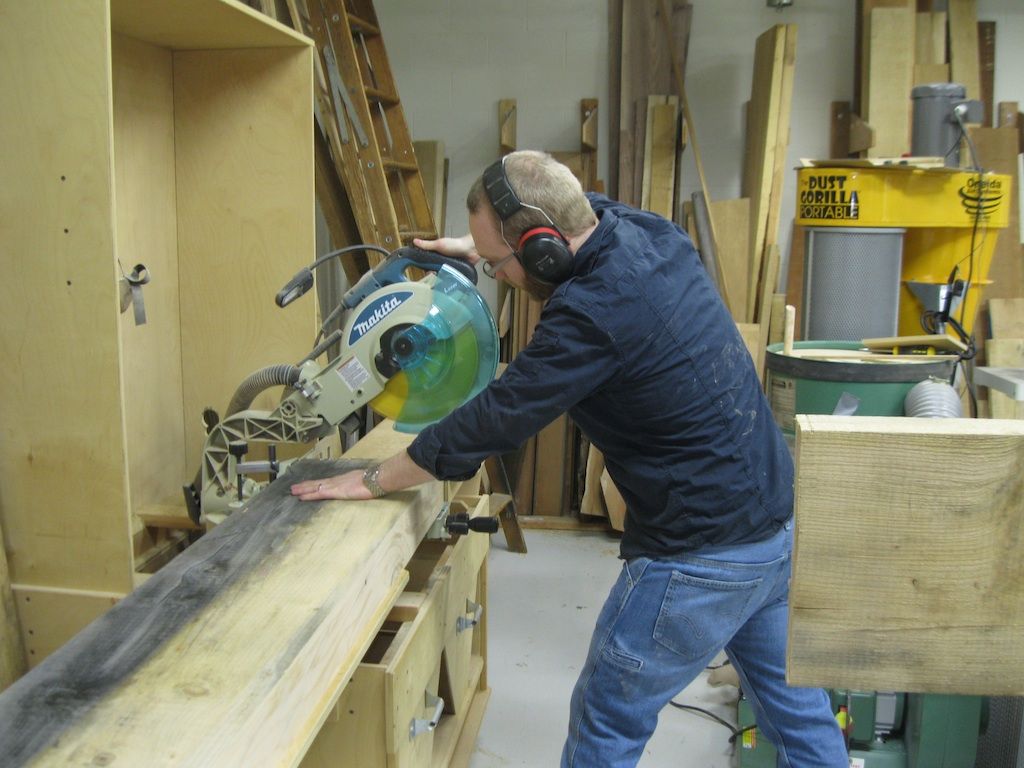
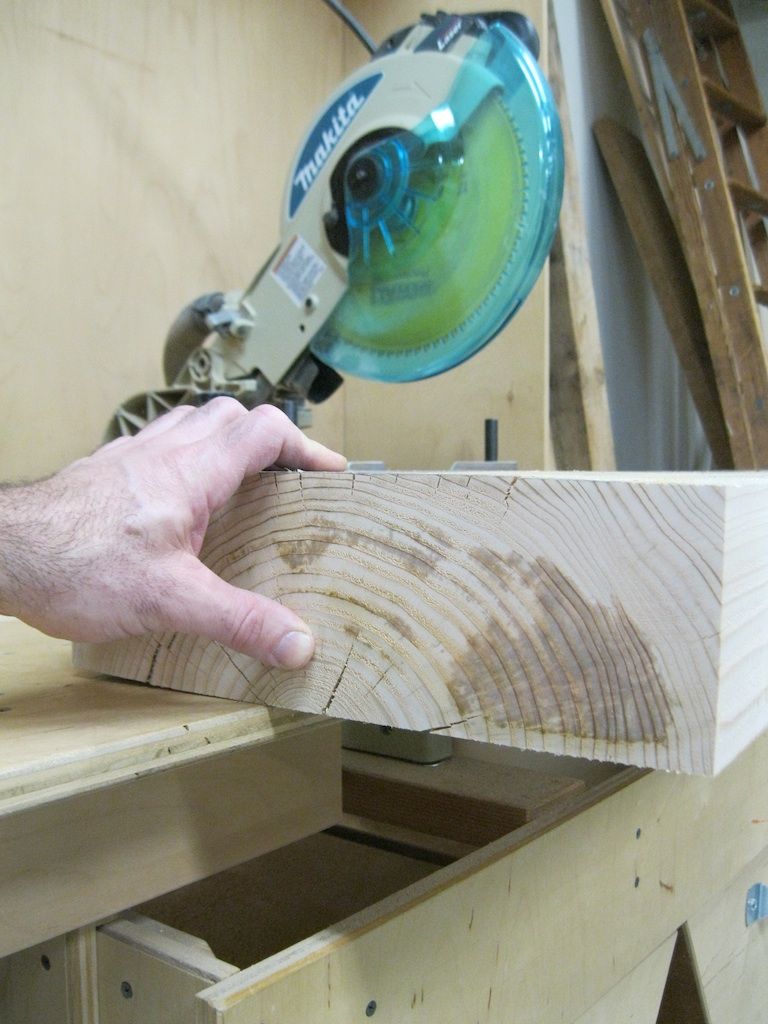
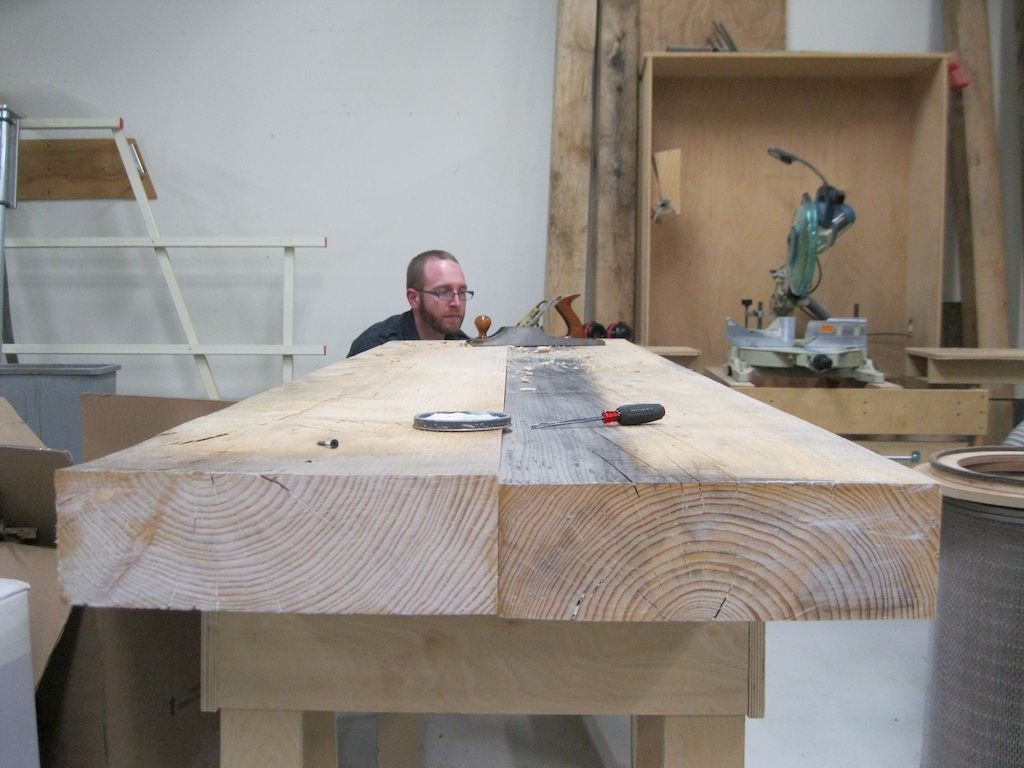
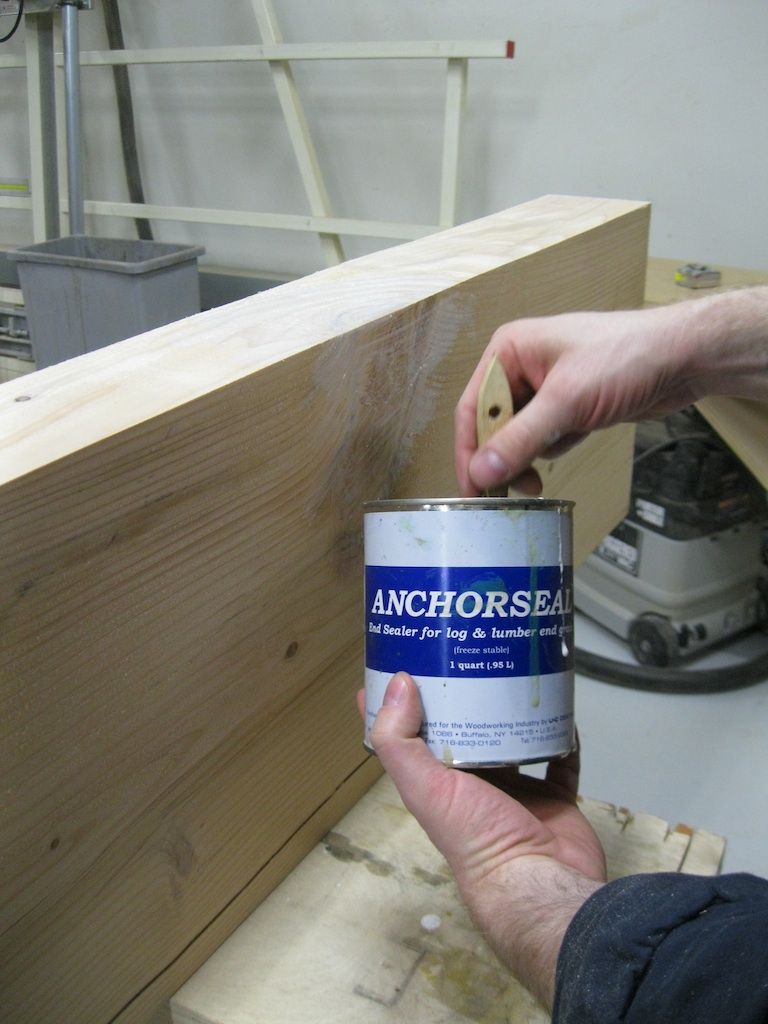
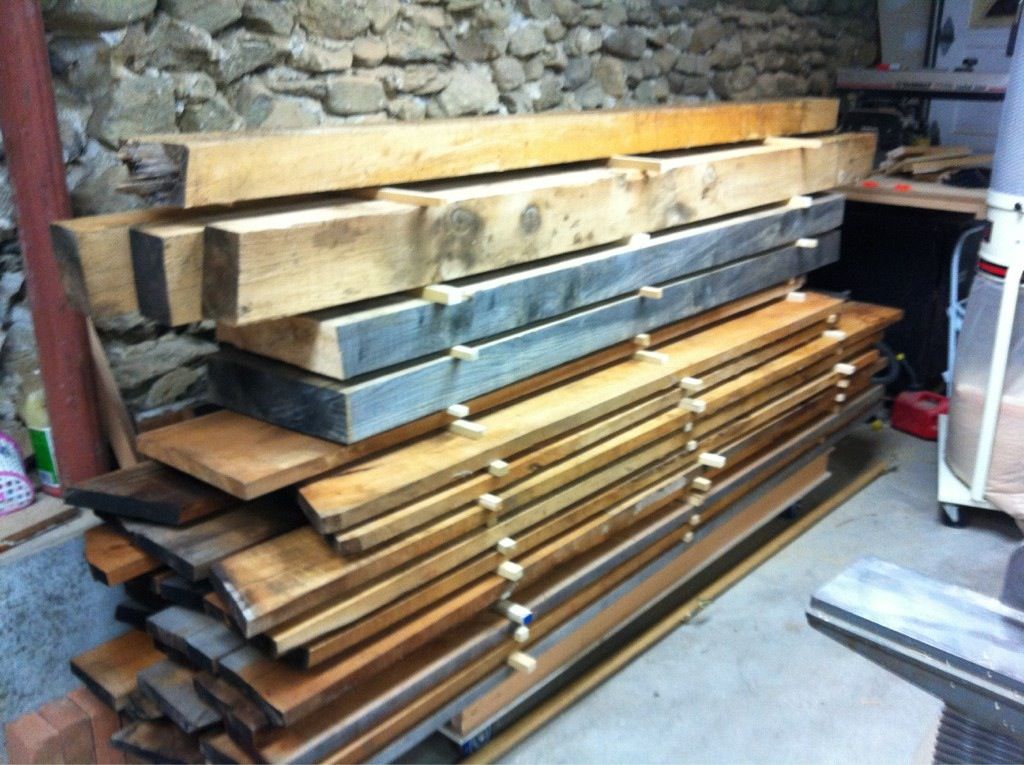
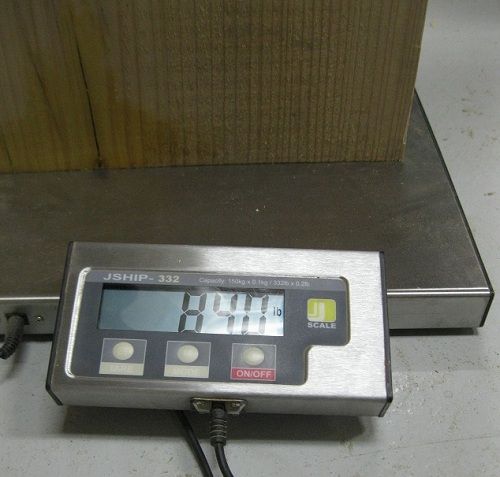
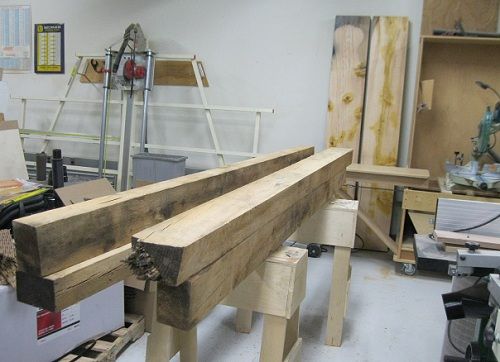























Comments
Hi Matt,
I'm very curious to see how the hemlock timbers work out. We have a lot of hemlock locally and I figured I could get some from anyone of dozens of local saw mills. I was concerned however that it was too soft. I picked up a small chunk from a local construction site and found that I could dent it with a thumbnail pretty easily. I'm not sure what the Janka hardness is of hemlock or how much it would really matter. I am also a bit worried about checking. I've designed a couple buildings where our clients wanted exposed timber and locally that's likely to be either hemlock or cedar. One building I saw where hemlock was used had some pretty severe checking. However, I'm sure the contractor didn't take the precautions you're taking to seal the ends etc. Good luck with it and please keep us informed of your progress.
Will do, JLYoung. Hemlock is slightly harder and heavier than white pine, but not quite as stiff. At 4 in. thick, it hopefully won't matter matter very much, especially in 7 ft. lengths. My theory is that the relative softness of hemlock, compared with something like maple, will mean the bench and the vise jaws will be less likely to mar my workpieces. Hopefully.
Sorry Ken,
I saw a picture of matt Kenney waering his new handplane shirt in this post and I figured he wrote this article.
For pieces that big, it's actually simpler and much more accurate to keep track of the moisture level by periodically weighing them. Take some of the cutoffs and dry them in an oven at 250°F for a couple of hours, then weigh them to obtain the average density of the wood at 0% moisture content.
The rest of the calculations are left as an exercise for the reader...of Bruce Hoadley's _Understanding Wood_.
-Steve
I have been considering building a new bench as well and am unsure of what I want to do with the top. I keep going back and forth between a single slab or two with a open trench in the middle, or to use 2" wide strips. I have a local source here on the west coast (Bobs Big Boards in Longview WA) who mills urban lumber to order. He has some nice 6"x30"x12' maple slabs that I have been eyeballing but can't decide if I want him to mill them down a little or a lot. How stable do yo think such large planks will be over time?
Log in or create an account to post a comment.
Sign up Log in